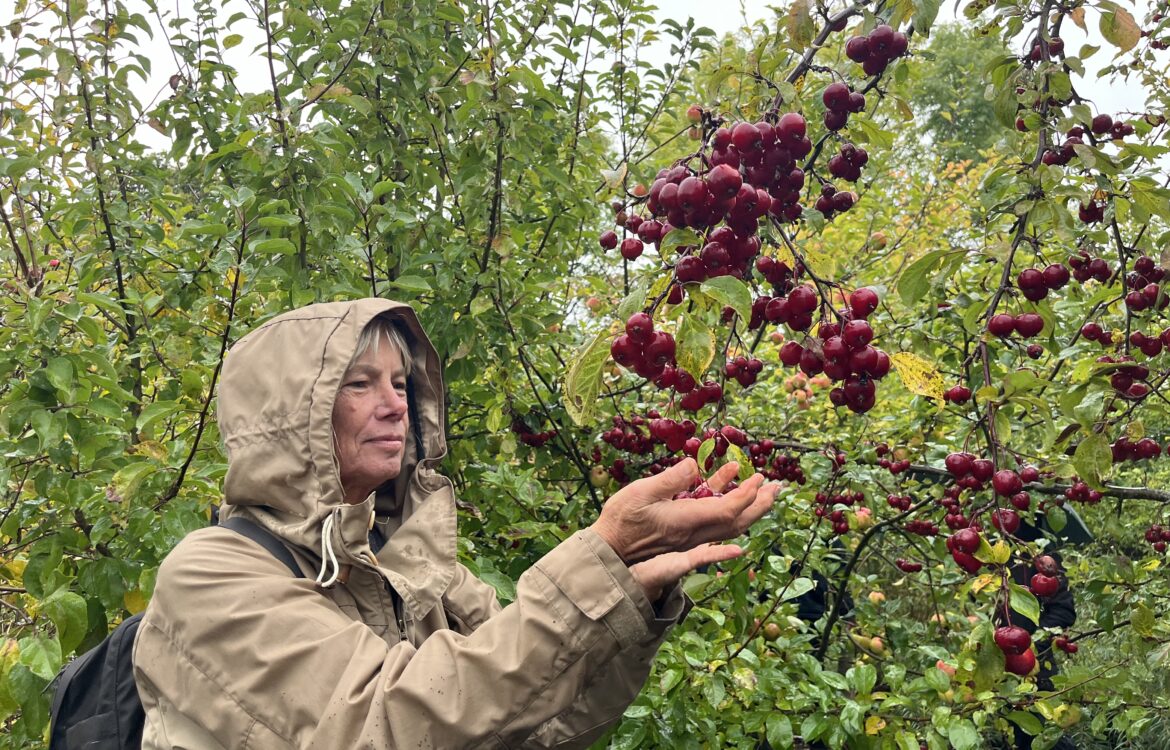
Crowd Breeding of apples in Denmark: A collaborative approach to sustainable agriculture
Written By: Mariagiulia Mariani
Denmark boasts a rich but underappreciated history of apple cultivation, which significantly declined in the 1970s due to European Union policies and increased competition. Today, there are an estimated 2 million fruit trees in private gardens, where pesticide use is prohibited. This figure is comparable to the approximately 4 million trees in commercial orchards, of which around half are now organic, reflecting a broader shift toward sustainability in the sector. The demand for new apple cultivars tailored for organic farming has emerged from this trend. However, traditional apple breeding can be costly, prompting the innovative approach of involving volunteers as breeders in a process known as “crowd breeding.”
Crowd breeding, a form of citizen science (also known as community or crowd science), involves non-professionals collaborating with scientists to breed new crop varieties. This participatory model enables volunteers—whether amateur gardeners or farmers—to contribute to the breeding and selection process.
In Denmark, crowd breeding is applied to apple cultivation, utilizing the genetic diversity housed in the national apple gene bank, known as The Pometum, which contains approximately 800 apple cultivars. The Apple Oasis project, launched in 2013 by researchers Maren Korsgaard and Torben Bo Toldam-Andersen at the University of Copenhagen, aims to create robust apple varieties suited for organic and local production rather than mass-market distribution. This initiative targets small-scale organic farms and local markets, catering to consumers who value sustainability and wish to reconnect with traditional Danish apple varieties that evoke childhood memories.
In its initial phase, 136 volunteers received 10,000 open-pollinated seeds from 54 historical Danish cultivars known for their flavor and disease resistance. These volunteers nurtured the seedlings under varied environmental conditions. By 2019, around 1,700 trees had survived despite challenges such as adverse weather and animal attacks. Notably, 39% of these trees produced apples with good or very good taste, while 54% demonstrated high resistance to common apple diseases, including scab, mildew, and cancer.
The project ensures that only the hardiest trees thrive by planting seedlings in diverse environments, ranging from urban orchards to rural farms across both southern and northern Denmark. This natural selection method helps identify the best candidates for future breeding.
The Danish apple breeding initiative can be classified as Level 3 in Muki Haklay’s framework of citizen participation in science, termed “participatory science.” At this level, citizens actively engage not only in data collection but also in defining the problems being addressed. Volunteers play a significant role in selecting, growing, and evaluating new apple cultivars, which embodies a deeper level of collaboration.
The results of this initiative are promising, with plans to continue grafting the best cultivars onto various rootstocks for further evaluation. This diversity highlights the project’s success in creating a broad genetic pool, essential for ensuring the resilience of apple cultivation in Denmark.
During the 2nd InnOBreed annual meeting (October 09-10, 2024), participants visited The Pometum, a community orchard and a family orchard involved in crowd breeding. These visits underscored the importance of genetic diversity and sustainable practices within the project, showcasing the dedication of both researchers and citizen participants.
A notable aspect of the initiative is the involvement of local communities passionate about apple cultivation. For example, the Dumpedal orchard, located about an hour from Copenhagen, has united 25 families who collaboratively manage their community orchard, plan harvests, and process juice. The enthusiasm of the Dumpedal community, which also hosts annual events like apple blossom festivals, has been instrumental, as these dedicated growers chose to join and contribute to the apple breeding project.
Beyond apple cultivation, the Dumpedal orchard integrates educational and social elements, sensitizing participants to sustainable farming practices and co-experiencing its broader environmental benefits. The initiative was inspired by the global Transition Movement, which focuses on enhancing local resilience and sustainability. Through their engagement, Danish citizens are actively shaping the future of apple cultivation. As Allison Michel, a project funder of the Dumpedal orchard and artist, expressed, she feels profound pride in contributing to this effort.
The Danish crowd breeding initiative exemplifies how community-driven projects can promote biodiversity and organic farming while encouraging community engagement in agriculture.

